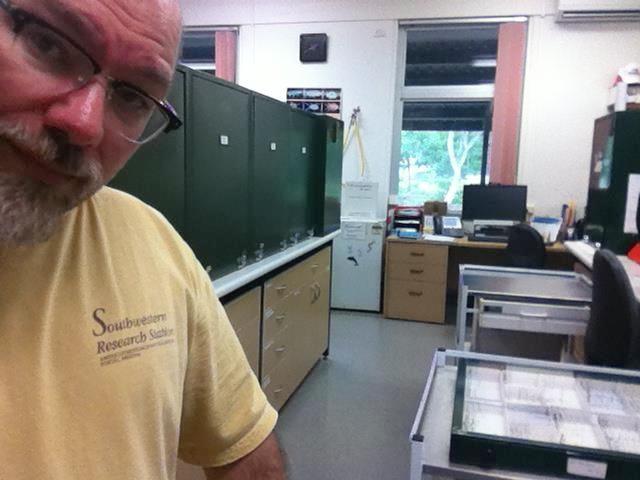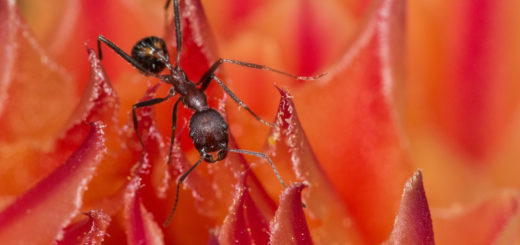Strobing in Australian strobe ants Opisthopsis haddoni
The strobe ants of Australia (Opisthopsis spp.) move with a rapid staccato gait, appearing as if they were under a strobe light.
A Photoblog contribution compiled by
and Terry P. McGlynn 
In th eir paper “Natural history observations and kinematics of strobing in Australian strobe ants, Opisthopsis haddoni (Hymenoptera: Formicidae)” published in Myrmecological News in March 2018, Jane S. Waters and Terry P. McGlynn show the strobe ants of Australia. Strobing involves periodic bursts of rapid acceleration and deceleration. While stopped, ants distinctly tap their antennae on the ground and raise them again before resuming their gait. Strobing behavior may have evolved as a form of camouflage to move without easy detection or as a tradeoff to maximize high-speed locomotory behavior within the constraints imposed by the spatial and temporal demands for neurosensory processing.
eir paper “Natural history observations and kinematics of strobing in Australian strobe ants, Opisthopsis haddoni (Hymenoptera: Formicidae)” published in Myrmecological News in March 2018, Jane S. Waters and Terry P. McGlynn show the strobe ants of Australia. Strobing involves periodic bursts of rapid acceleration and deceleration. While stopped, ants distinctly tap their antennae on the ground and raise them again before resuming their gait. Strobing behavior may have evolved as a form of camouflage to move without easy detection or as a tradeoff to maximize high-speed locomotory behavior within the constraints imposed by the spatial and temporal demands for neurosensory processing.
The three photos below show the Northern Territory (Australia) habitats where Opisthopsis was studied (© Jane Waters):



The photo below shows the filming arena the researchers put together to record the strobing behavior at 240 Hz with an iPhone (© Jane Waters). They were working in the CSIRO lab, which houses an extraordinary ant collection built by Alan Andersen.

The movie below (© Jane Waters) shows an example of the raw video the researchers recorded, the digitized trajectory of an ant tracked in the video, the speed of the ant, and stationary periods identified with red dots between the strobe cycles. The software we used for tracking is built in open source physics java framework and is publicly available here.
Still unsatisfied? Follow this link to see great pictures of Opisthopsis spp. made by Ajay Narendra






Recent Comments